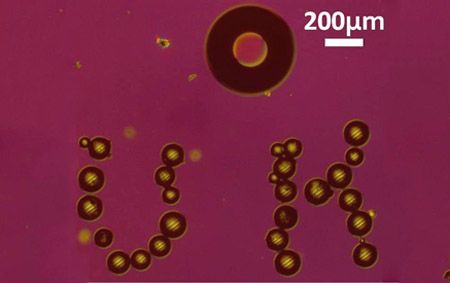It may be possible to conjure swarms of microscopic bubble robots out of nothing . . .
We’re used to thinking of robots as mechanical entities, but at very small scales, it sometimes becomes easier to use existing structures (like microorganisms that respond to magnetic fields or even swarms of bacteria) instead of trying to design and construct one (or lots) of teeny tiny artificial machines. Aaron Ohta’s lab at the University of Hawaii at Manoa has come up with a novel new way of creating non-mechanical microbots quite literally out of thin air, using robots made of bubbles with engines made of lasers.
To get the bubble robots to move around in this saline solution, a 400 mW 980nm (that’s infrared) laser is shone through the bubble onto the heat-absorbing surface of the working area. The fluid that the bubbles are in tries to move from the hot area where the laser is pointing towards the colder side of the bubble, and this fluid flow pushes the bubble towards the hot area. Moving the laser to different sides of the bubble gives you complete 360 degree steering, and since the velocity of the bubble is proportional to the intensity of the laser, you can go as slow as you want or as fast as about 4 mm/s.
This level of control allows for very fine manipulation of small objects, and the picture shows how a bubble robot has pushed glass beads around to form the letters “UH” (for University of Hawaii, of course):
via IEEE Spectrum – Evan Ackerman
The Latest Streaming News: Microbots updated minute-by-minute








